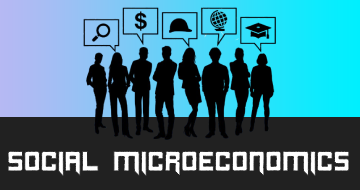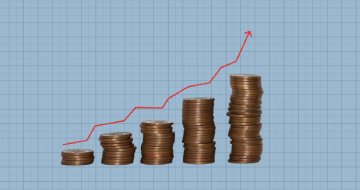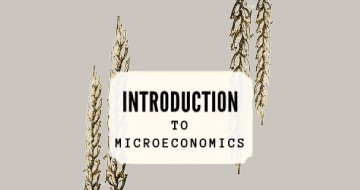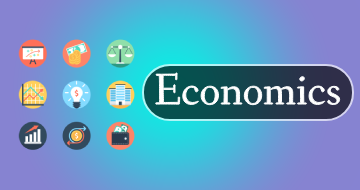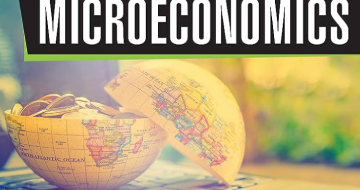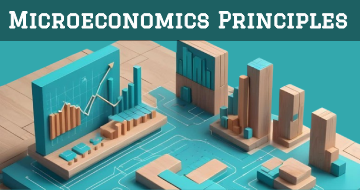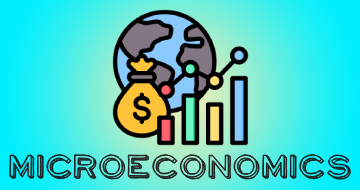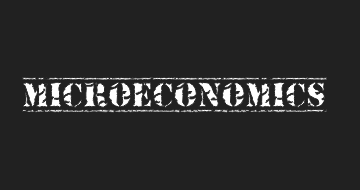IIRF Online > Finance & Accounting > Economics > Microeconomics > Microeconomics: Foundations and Insights
Microeconomics: Foundations and Insights by Coursera
Course Highlights
- Analyze assumptions in economic models and evaluate policy interventions' impact on market outcomes in both perfect and imperfect markets.
- Create and solve basic economic models, identify their limitations, and develop appropriate policy solutions for real-world issue.
- Interpret strategic interactions in game theory, illustrating how information and move order impact decision-making among economic agents.
- Examine how changing constraints affect optimal choices and how preferences and constraints together shape decisions in various markets.
Skills you will learn!
Curriculum
21 Topics
Course Introduction
What is the Use of Microeconomics?
Types of Reasoning
Scarcity and Choice
What Drives Choices?
How to Decide Between A and B?
Measuring Trade-offs
Broken Window Fallacy
Can You be More Rational?
Difficult Policy Choices
Course Overview
Recommended Reading: Choice and Incentives
Recommended Reading: Opportunity Cost
Essential Reading
Graded Quiz: Basic Toolkit
Practice Questions: The Economy versus Economics
Practice Questions: Choice and Incentives
Practice Questions: Trade-offs
Practice Questions: Opportunity Cost
Practice Questions: Being Rational
Practice Questions: Free Travel for Women Passengers in Delhi Transport Corporation Buses
19 Topics
Categorical versus Marginal Choices
Utility: Total and Marginal
Properties of Indifference Curves
Some Peculiar Indifference Curves
Feasible Set
Optimal Choice
Income Effect
Substitution Effect
Classifying Types of Goods
Income and Substitution Effect of a Rise in Wages
Recommended Reading: Income and Substitution Effect
Recommended Reading: The Cost of Leisure: Labor Supply Curve (Backward Bending)
Essential Reading: The Cost of Leisure: Labor Supply Curve (Backward Bending)
Graded Quiz: Consumer Choice
Practice Questions: Objective Function Preferences and Rationality
Practice Questions: Formalizing Preferences: Indifference Curves
Practice Questions: Budget Constraint and Optimality
Practice Questions: Income and Substitution Effect
Practice Questions: The Cost of Leisure: Labour Supply Curve (Backward Bending)
20 Topics
Production Decisions
Cost Structure: Fixed Variable and Sunk Costs
Diminishing Product Average and Marginal Costs
Iso-cost and Isoquants
Costs and Profit
Revenue and Marginal Revenue
Optimal Production Choice
Shutdown Price
Economies and Diseconomies of Scale
Impact of Innovation
What Besides Profit do Producers Care for?
Recommended Reading: Economies of Scale and Innovation
Recommended Reading: Objective Function of a Not-for-Profit
Essential Reading
Graded Quiz: Producer Choice
Practice Questions: Costs: Average and Marginal
Practice Questions: Production Possibility Frontier and Iso-profit Curves
Practice Questions: Profit Maximization
Practice Questions: Economies of Scale and Innovation
Practice Questions: Objective Function of a Not-for-profit
18 Topics
What does Price do?
Diamond Water Paradox
Key Assumptions and Results
What if Assumptions are Unmet?
Simple Changes in a Market
Interconnected Changes Across Markets
Emergence of Grey or Black Markets
Emergence of Patronage
Vaccine Delivery Policy
Recommended Reading: Partial versus General Equilibrium Effects
Recommended Reading: Simple Policy Interventions in a Market
Essential Reading
Graded Quiz: Perfectly Competitive Market and Basic Policy Toolkit
Practice Questions: Price as an Allocation Mechanism
Practice Questions: The Assumptions Underlying Perfect Competition
Practice Questions: Partial versus General Equilibrium Effects
Practice Questions: Simple Policy Interventions in a Market
Practice Questions: Can you Allocate Better Than the Market?
19 Topics
Undesirable Aspects of Perfectly Competitive Markets
Desirable Aspects of Perfectly Competitive Markets
First Fundamental Theorem of Welfare Economics
Social Welfare functions
The Role of Politics
The Trolley Problem
Deontology – Moral Injunctions
Rawlsian – Worst-off
What is the Case for (and Against) UBI?
Recommended Reading: What is a Good Outcome?
Recommended Reading: Utilitarianism
Essential Reading
Graded Quiz: Social Choice and Welfare
Practice Questions: Is Perfect Competition Desirable?
Practice Questions: (Pareto) Efficiency
Practice Questions: What is a Good Outcome?
Practice Questions: Utilitarianism
Practice Questions: Other Possible Social Welfare Functions
Practice Questions: Universal Basic Income
19 Topics
Decision Theory versus Game Theory
Rules of a Game
Prisoner’s Dilemma
Tragedy of Commons
The Order Matters
Backward Induction
Adverse Selection
Moral Hazard
Principal-Agent Problem I
Principal-Agent Problem II
Recommended Reading: Choice with Incomplete or Imperfect Information
Recommended Reading: Signaling with Education Degrees
Essential Reading: Signaling with Education Degrees
Graded Quiz: Social Strategic Interactions
Practice Question: No (Wo)man is an Island
Practice Questions: Tragedy of Commons and Nash Equilibrium
Practice Questions: Sequential Games and Game Trees
Practice Questions: Choice with Incomplete or Imperfect Information
Practice Questions: Signaling with Education Degrees
19 Topics
Monopolist’s Problem
Outcomes in a Monopoly Market
Are Monopolies Desirable?
Monopsony in the Labor Market
Nash Equilibrium in a Duopoly
Introduction to Competition Policy
Abuse of Dominant Position and Price Discrimination
Competition Policy and Big Tech
Recommended Reading: Cartels
Recommended Reading: Competition Policy
Essential Reading: Competition Policy
Course Wrap-up
Graded Quiz: Introduction to Imperfect Competition
Practice Questions: Monopoly and Social Welfare
Practice Questions: Natural Monopoly
Practice Questions: Monopsony
Practice Questions: Duopolies and Cournot Competition
Practice Questions: Cartels
Practice Quiz: Competition Policy

Microeconomics: Foundations and Insights
